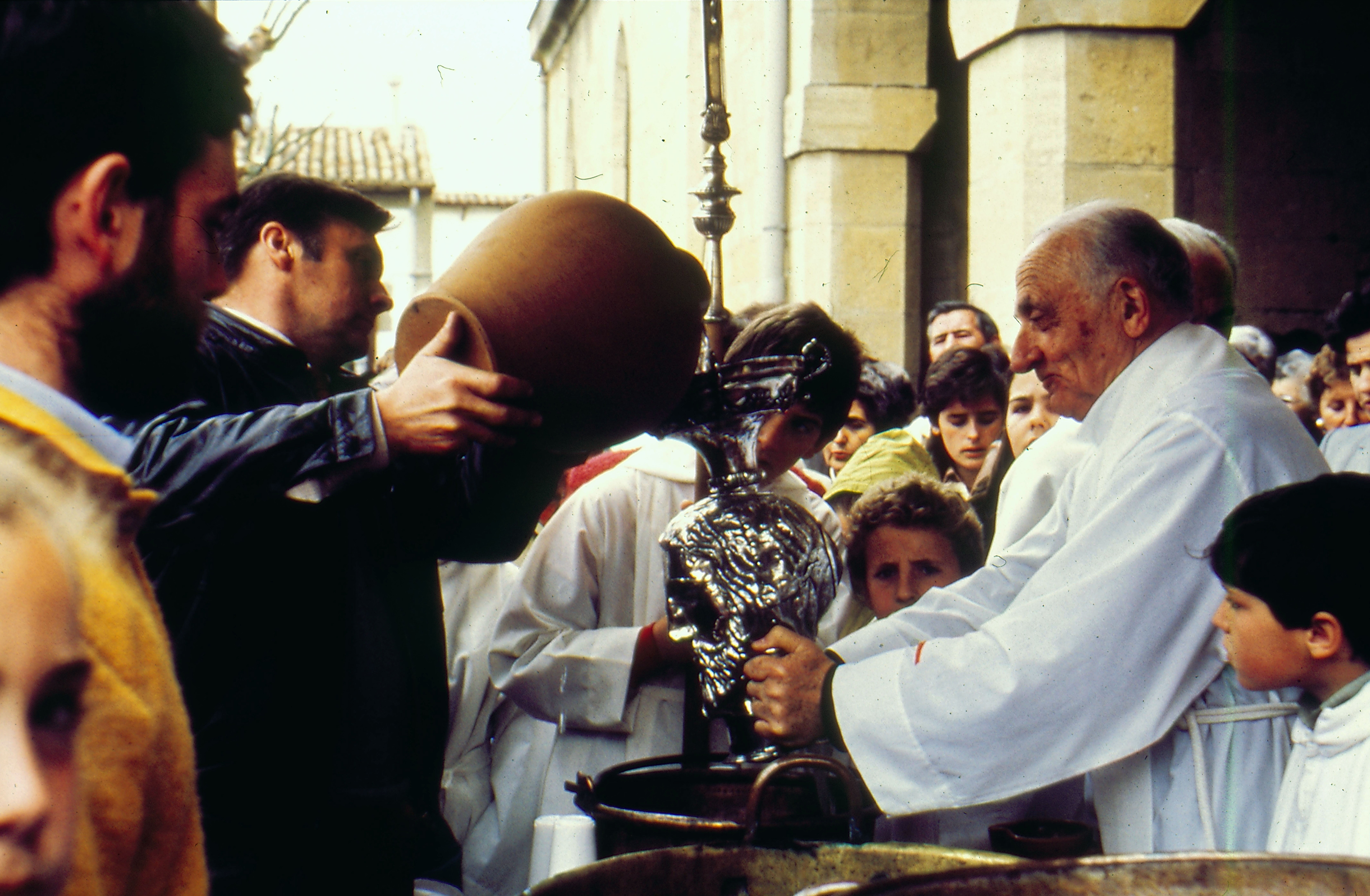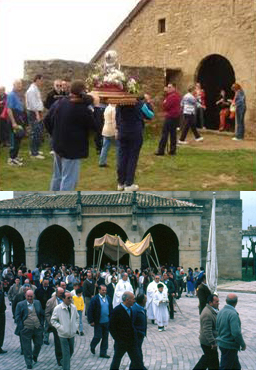Basque ethnography at a glance
Holy Week was over, but celebrations continued in Obanos, a village in Navarre where a most singular ritual is observed on the Thursday after Easter Sunday: water and wine are blessed by pouring them through Saint William’s head reliquary. Events took place on 31 March this year, in the newly arrived spring season 2016.
Just until a few decades ago, adults and children used to carry the saint’s head in solemn procession from the hermitage down to the village in the afternoon of the Wednesday of Easter Week, and back the following Sunday. Nowadays, the silver bust containing the darkened skull of Saint William is safely kept in the parish church all year round. Striking as it might seem, up to the 1960s villagers would quite naturally drink the ‘blessed’ water and wine drained through the sacred relics. Some silver strips prevented the different parts from coming apart. The reliquary worshipped these days dates from the ’60s. Village residents contributed silverware to the extent of their means, and the piece was crafted at Balaguer’s silversmith workshop.
Saint William’s, together with Saint Gregory of Ostia’s in Sorlada (also in Navarre) and Saint Victor’s in Gauna (Álava), are examples of worship of holy skulls in our region. In all three cases the corresponding hermitages and sanctuaries stand above high hills, and multiple healing properties are attributed to the water blessed by those relics, particularly as regards head-related illnesses. In Obanos, however, not only water but also claret wine is transferred through the saint’s cranial remains. Villagers enjoy of its benefits as they delight in appetizers and sweets provided by St Guillermo hunting society.
The “Mystery of Obanos” passion play tells us of the story of William and Felicia of Aquitaine, siblings of princely descent. Saint William’s fate was inextricably linked to his sister’s, saint Felicia, whose incorrupt body is venerated in Labiano. The tale, one of many framed within the Way of St James, is either partly or fully performed every year. The legend has it that William killed his sister in an attack of fury when he learned of her decision to settle in Obanos, a hidden place far from palaces. Plunged into grief and remorse, William made pilgrimage to Santiago de Compostela. On his return, he retired to the nearby shrine of Arnotegui as a penitent, where he died in the odour of sanctity.
The figure of Saint Guillermo or Saint Guillén, as locals know him, occupies a special place in the community’s imagery. The hermitage where his remains were preserved came to be interchangeably called Arnotegui (a Basque word which translates as “Winery”) or St Guillermo’s. Here are some verses referring to the death of the saint: San Guillermo, murió mártir, quemadito en una hoguera, en el término de Obanos que se llama Caratea (Saint Guillermo, he died a martyr, burned at the stake, on a hillside in Obanos called Caratea). Another chant goes: San Guillermo está en un alto, y Saría en una cuesta, si san Guillermo se cae, a Saría le revienta (St Guillermo’s is on high ground, and Saría on a downhill slope, should St Guillermo’s fall, Saría will be crushed). Saint William is believed to protect the village and its inhabitants against storms. As Martín Zaratiegui assured, whenever a nublau (or threatening dark cloud) approached from Puente la Reina side and moved past St Guillermo’s hermitage, the cloud would split and no damage was caused.
This is certainly an utmost extraordinary expression of folk religion.
M.ª Amor Beguiristáin – Etniker Navarre – Emeritus Professor of the University of Navarre
Translated by Jaione Bilbao – Language Department – Labayru Fundazioa
References for further information:
- Santos Beguiristáin. El Misterio de Obanos, Temas de Cultura Popular 33, 1968.
- M.ª Amor Beguiristáin and Francisco Javier Zubiaur. “Estudio Etnográfico de Obanos (Navarra)” in Contribución al Atlas Etnográfico de Vasconia, San Sebastián: Eusko-Ikaskuntza, 1990, pp. 409-517.
- Family Diet, part of the Ethnographic Atlas of the Basque Country.



